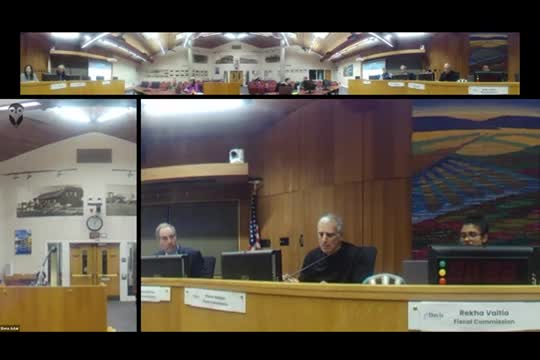Consultant outlines property tax timeline and forecasts ~3.2–3.5% growth for Davis general fund in 2025–26
February 09, 2025 | Davis, Yolo County, California
This article was created by AI summarizing key points discussed. AI makes mistakes, so for full details and context, please refer to the video of the full meeting. Please report any errors so we can fix them. Report an error »

Paula Colney, the city’s property-tax consultant, told the Fiscal Commission that the lien date for the 2025–26 property-tax roll was Jan. 1, 2025, and that the assessor’s office will include sales, new construction and other changes that occurred in calendar year 2024 on the roll used to build next year’s budget.
Colney laid out the calendar and roles for the assessor, auditor and tax collector and emphasized that the three offices operate on separate, non-integrated schedules. She said tax bills will typically be printed and mailed in September–October 2025 and are due in November 2025 and February 2026. "There are no dumb questions in property tax," Colney said during her presentation.
Why it matters: property tax is the largest source of general-purpose revenue for the city. Colney reviewed a 20-year history showing average assessed-value growth of roughly 4.36% but noted the most recent three-year growth totaled 15.77%. For the current forecast she reported a projected general-fund growth of about 3.23% without new construction; adding a conservative portion of expected new construction raises that forecast to roughly 3.4–3.5%.
Key details from the presentation: Colney attributed about 47.5% of this year’s growth to the Prop. 13 allowable CPI adjustment, with roughly one-third of growth coming from property transfers (sales) and smaller amounts from new construction and Prop. 8 reductions. She reported the city’s taxable value at roughly $11.4 billion and said Davis is predominantly secured property (about 98.6% secured).
Colney also reviewed long-standing program shifts that affect the city’s share of the tax dollar, noting Vehicle License Fee (VLF) in-lieu funds and ERAF shifts reduce what the city would otherwise receive. She described differences among Yolo County cities in the percent of the tax dollar they receive, explaining that those percentages were established based on pre-Prop. 13 allocations and, in some cases, negotiated at incorporation.
Questions and follow-up: commissioners asked about forecast variance and methodology. Colney said her forecasts typically track within about 1% of realized growth but that forecasts are conservative when new-construction assumptions are left out. She offered to provide additional county-level reports and a “market-value if all properties sold” analysis on request. The commission requested the presentation materials for review.
Colney laid out the calendar and roles for the assessor, auditor and tax collector and emphasized that the three offices operate on separate, non-integrated schedules. She said tax bills will typically be printed and mailed in September–October 2025 and are due in November 2025 and February 2026. "There are no dumb questions in property tax," Colney said during her presentation.
Why it matters: property tax is the largest source of general-purpose revenue for the city. Colney reviewed a 20-year history showing average assessed-value growth of roughly 4.36% but noted the most recent three-year growth totaled 15.77%. For the current forecast she reported a projected general-fund growth of about 3.23% without new construction; adding a conservative portion of expected new construction raises that forecast to roughly 3.4–3.5%.
Key details from the presentation: Colney attributed about 47.5% of this year’s growth to the Prop. 13 allowable CPI adjustment, with roughly one-third of growth coming from property transfers (sales) and smaller amounts from new construction and Prop. 8 reductions. She reported the city’s taxable value at roughly $11.4 billion and said Davis is predominantly secured property (about 98.6% secured).
Colney also reviewed long-standing program shifts that affect the city’s share of the tax dollar, noting Vehicle License Fee (VLF) in-lieu funds and ERAF shifts reduce what the city would otherwise receive. She described differences among Yolo County cities in the percent of the tax dollar they receive, explaining that those percentages were established based on pre-Prop. 13 allocations and, in some cases, negotiated at incorporation.
Questions and follow-up: commissioners asked about forecast variance and methodology. Colney said her forecasts typically track within about 1% of realized growth but that forecasts are conservative when new-construction assumptions are left out. She offered to provide additional county-level reports and a “market-value if all properties sold” analysis on request. The commission requested the presentation materials for review.
View full meeting
This article is based on a recent meeting—watch the full video and explore the complete transcript for deeper insights into the discussion.
View full meeting
